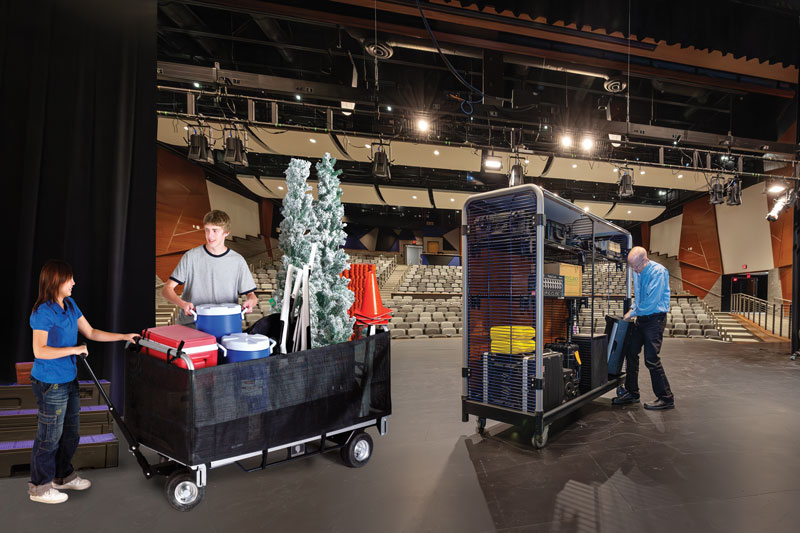If you work with rigging regularly but you’re not an installer, you may not know exactly what the fleet angle is, or why it’s important.
It’s a good piece of information to have in your back pocket when you are adjusting or inspecting your rigging, or if you have the opportunity to buy a new rigging system. If you notice an excessive fleet angle, it could be a clue that something is wrong with your mounting or machinery.
The fleet angle of a hoist is the angle at which the cable meets a grooved cylinder.
- In manual rigging, the grooved cylinder is the head block or loft blocks.
- In motorized rigging, the grooved cylinder is the drum.
Fleet angle is the difference between the angle at which the cable is traveling and the centerline of the drum.

Diagram © Stage Rigging Handbook, Third Edition, by Jay O. Glerum
In a properly installed manual lineset, the cable comes out as parallel to the groove of the block as possible. It can form an angle of 1.5 degrees into or out of the block, but no more—if the angle is greater, the cable will rub against the sheave. This can cause the cable to fray and eventually break, which can bring scenery or stage weights down on someone’s head.
Okay, so what’s a zero fleet angle hoist?
Chances are you’ve seen the term zero fleet angle in articles or advertising for motorized rigging equipment. A hoist with zero fleet angle has a non-moving set of blocks above the drum. As the drum turns, it actually moves, so the cable piles on and off of the drum with no change in the angle between the drum and the cable.
Zero fleet angle hoists can be installed in greater density than other drum or line shaft hoists—allowing for more sets on stage. These hoists are particularly useful in renovations of historic theatres, where there may be minimal loft space.









